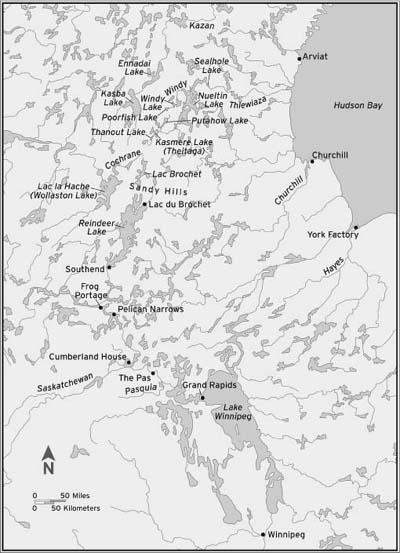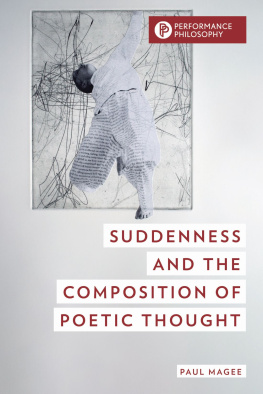Half-Title
The Old Way North
THE
Following the
OLD
Oberholtzer-Magee
WAY
Expedition
NORTH
DAVID F. PELLY

Copyright
Borealis Books is an imprint of the Minnesota Historical Society Press.
www.borealisbooks.org
2008 by David F. Pelly. All rights reserved. No part of this book may be used or reproduced in any manner whatsoever without written permission, except in the case of brief quotations embodied in critical articles and reviews. For information, write to Borealis Books, 345 Kellogg Blvd. W., St. Paul, MN 55102-1906.
The Minnesota Historical Society Press is a member of the Association of American University Presses.
Manufactured in the
United States of America
10 9 8 7 6 5 4 3 2 1
 The paper used in this publication meets the minimum requirements of the American National Standard for Information SciencesPermanence for Printed Library Materials, ANSI Z39.48-1984.
The paper used in this publication meets the minimum requirements of the American National Standard for Information SciencesPermanence for Printed Library Materials, ANSI Z39.48-1984.
International Standard Book Number
ISBN 13: 978-0-87351-616-7 (cloth)
ISBN 10: 0-87351-616-8 (cloth)
E-book ISBN: 978-0-87351-748-5
Library of Congress
Cataloging-in-Publication Data
Pelly, David F., 1948
The old way North : following the Oberholtzer-Magee expedition/David F. Pelly.
p. cm.
Includes bibliographical references and index.
ISBN-13: 978-0-87351-616-7
(cloth : alk. paper)
ISBN-10: 0-87351-616-8
(cloth : alk. paper)
1. ManitobaDescription and travel.
2. Hudson Bay RegionDescription and travel.
3. Oberholtzer, Ernest C. (Ernest Carl), 18841977TravelManitoba
4. Magee, BillyTravelManitoba.
5. Pelly, David F., 1948 TravelManitoba.
6. Oberholtzer, Ernest C. (Ernest A Carl), 18841977Diaries.
7. Frontier and pioneer lifeManitoba
8. Canoes and canoeingManitobaHistory20th century.
9. Chipewyan IndiansHistory20th century.
10. Cree IndiansHistory20th century.
I. Title.
F1063.P45 2008
917.1271042dc22
2008004806
Dedication
To Jean Sandford Replinger,
a modern visionary of the wilderness,
with eternal admiration and gratitude
Contents
Contents
Preface
Preface
Most people know something of the early search for the Northwest Passage by sea from the North Atlantic and its role in mapping and exploring the northern reaches of Canada. Similarly northern history buffs are quite familiar with the overland route used by Alexander Mackenzie, John Franklin, George Back, and many others: from Edmonton north to Athabasca, down the Slave River to Great Slave Lake, the Mackenzie River itself, and other points beyond. But the central travel corridor into what remains today the heart of Canadas northern wildernessfrom Manitoba to the vast stretch of Nunavut on the west side of Hudson Bayremains shrouded in mystery, its natural and cultural history largely ignored. All three of these northern travel routes, and their respective histories, are a function of geography: two of them we know well, and understand why; the third is perhaps unjustly uncelebrated.
While most readers know about Sir John Franklin, and many know of Samuel Hearne, few know the names of those intrepid travelers who explored the inland northern waterways by canoe: A. P. Low, Guy Blanchet, and J B. Tyrrell, among others. Although the canoe is a Canadian icon, for some strange reason the hardy individuals who used it to first penetrate the unexplored (by white men) reaches of this country did not capture the publics imagination in a lasting way. Yet could anyone imagine a more difficult challenge than to endure weeks of paddling, facing the elements with only the crudest of shelterit was a life of labor, skill, and deprivation and of wind and bugs, often with no certainty of success or even survival.
Though Ernest C. Oberholtzer was neither of this set nor their equal, he did travel in their wake, and he did so in the earliest days of recreational canoeing in Canada. He therefore offers us an unusual link back in time. What fascinates me most is that he followed a particular old travel route to the North, one that touches many diverse elements of Canadian history and that dates back with certainty to before the arrival of Europeans, and yet was heavily used well into the twentieth century. Oberholtzer offers us our window into this past. Explorers, mapmakers, geologists, fur traders, trappers, Mounties, missionaries, and before all of them, the Native people themselves all used this travel corridor extensively. This book is the story that land could tell.
I am a canoeist. Over the past thirty years, I have paddled thousands of miles on rivers and lakes in northern Canadait has been a central theme to my life. That I felt some sense of empathy with Ernest Oberholtzer should not have surprised me. He went on his 1912 epic canoe trip to the North at age twenty-eight; at twenty-nine I took my first canoe trip in the Arctic. (One difference is that Ive been back many times, in most years since.) Both of us were changed, for life. We both became fascinated with the Native cultures of the North. We both went on to collect oral histories and traditional knowledge from these cultures. In our own ways, we both became storytellers. We both developed an attachment to the land that in turn defined our lives. The northern landscape has been one of my closest companions on the journey of life. There is no question the land has left its impression on me. It tells stories; I listen. At times, I am stirred to write them down, and this is one such occasion.
I would not have been able to do so, however, without the collaboration of Lynda Holland and Bill Layman. These two, who live in northern Saskatchewan, who have worked among the Dene (Chipewyan) for years and who typically spend their summers canoeing one portion or another of the old way North, were facilitators of the first order for this project. They searched archives; they mined oral histories; they shared their insights into the region and the people; and they opened doors for me when we visited the Dene communities through which Oberholtzers route passed. Much of the credit for this books wealth of story goes to these two friends, though any errors or misjudgements remain entirely my responsibility.
Finally, there are some important details to share regarding the actual words you will read. Several period documents are quoted verbatim. Wherever possible, the spelling mistakes and grammatical errors of the original have been retained (unless to do so would create confusion) in order to preserve the full flavor of the writers prose. Excerpts from Oberholtzers 1912 trip journal are shown in italics.
In the interest of clarity for readers on both sides of the border, I have used the term Native when referring to those aboriginal people whom, in Canada, we call the First Nations. Most particularly, in this context, this includes, with utmost respect, the Cree and Dene (Chipewyan). It is an essential truth that for these people above all, those who are most profoundly native to this landscape, the corridor at the heart of this book was first their way North.
D.F.P
Kipawa
Feby 2008














 The paper used in this publication meets the minimum requirements of the American National Standard for Information SciencesPermanence for Printed Library Materials, ANSI Z39.48-1984.
The paper used in this publication meets the minimum requirements of the American National Standard for Information SciencesPermanence for Printed Library Materials, ANSI Z39.48-1984.
